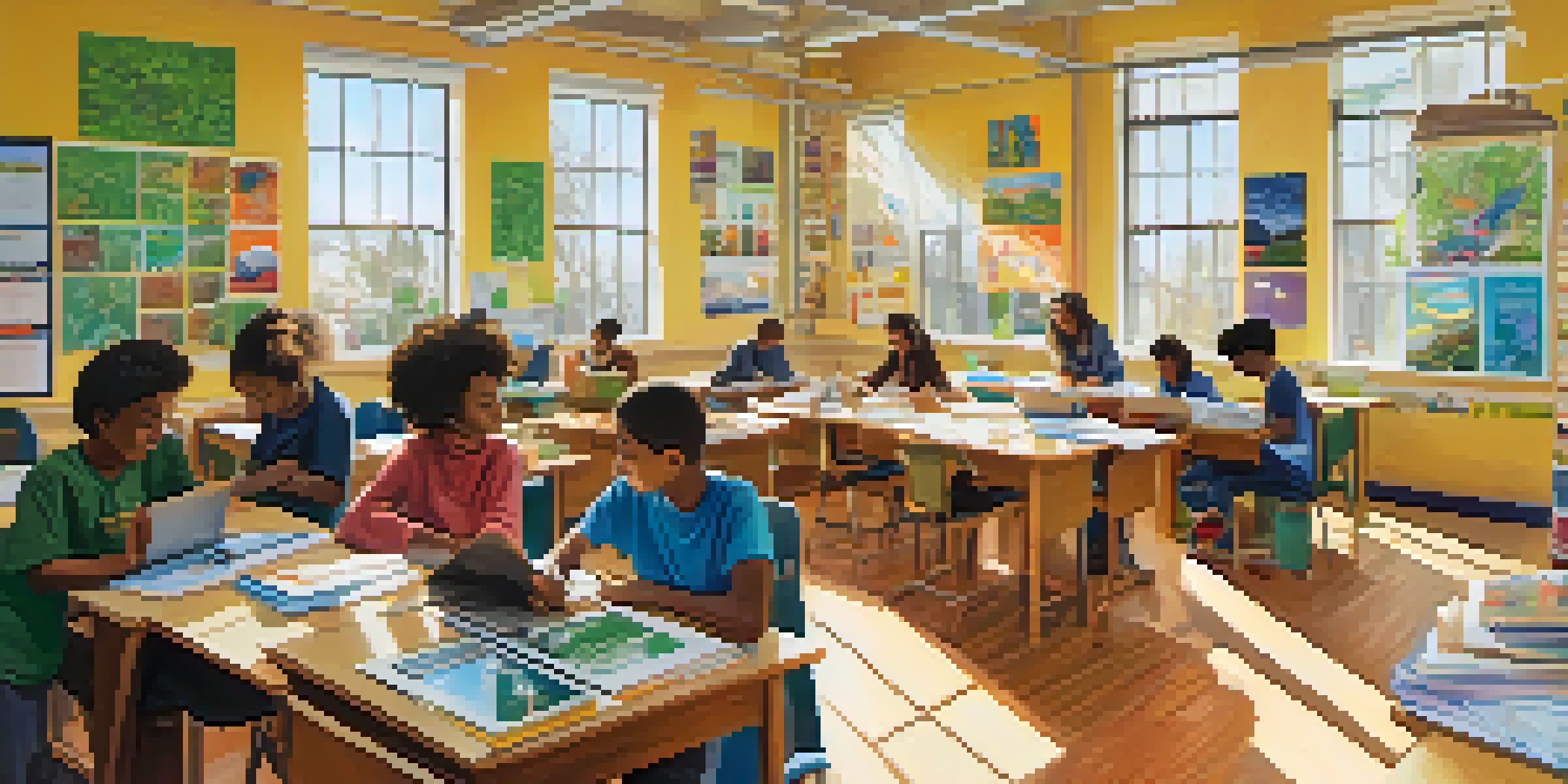Creating Impactful Social Change Through Classroom Projects

Understanding Social Change in Education
Social change refers to significant alterations in societal norms, values, and structures over time. In an educational context, it emphasizes the role of students in advocating for and creating positive change in their communities. By integrating social change into classroom projects, educators can empower students to think critically about societal issues and take meaningful action.
Education is the most powerful weapon which you can use to change the world.
When students engage with real-world problems, they develop a sense of responsibility and ownership. This approach not only enhances their learning experience but also prepares them to be proactive citizens. For instance, a project focused on food insecurity can lead students to research local issues and even partner with charities to address the problem directly.
Ultimately, understanding social change helps students realize that their voices matter. By fostering this awareness in the classroom, educators can cultivate a generation of informed and empathetic individuals ready to tackle the challenges of our time.
Identifying Relevant Issues for Projects
Choosing the right issue is crucial for creating impactful classroom projects. Educators should guide students to explore topics that resonate with their interests and experiences, such as environmental sustainability, social justice, or mental health awareness. This alignment fosters enthusiasm and commitment among students, leading to more meaningful engagement.

One effective method is to conduct a brainstorming session where students can suggest issues they care about. This collaborative approach ensures that the projects are student-driven, creating a sense of ownership. For example, a student-led initiative to reduce plastic waste can ignite passion and creativity, resulting in actionable solutions.
Empowering Students for Change
Integrating social change into education helps students take meaningful action on real-world issues, fostering responsibility and ownership.
Moreover, connecting these issues to the local community can amplify their relevance. When students see the direct impact of their work on their surroundings, it enhances their learning experience and motivates them to make a difference beyond the classroom.
Designing Engaging Classroom Projects
Once relevant issues are identified, the next step is designing projects that are engaging and educational. Educators can encourage project-based learning, where students work collaboratively to investigate their chosen topics and develop solutions. This hands-on approach helps students acquire critical thinking skills and fosters teamwork.
The greatest danger in times of turbulence is not the turbulence; it is to act with yesterday's logic.
For instance, a project on homelessness could involve students partnering with local shelters to understand the challenges faced by individuals experiencing homelessness. This real-world connection enriches the learning experience and encourages empathy among students. Additionally, integrating multimedia tools like videos or presentations can enhance creativity and engagement.
It's also important to set clear objectives for the projects. By outlining what students are expected to learn and achieve, educators can guide the process without stifling creativity. This balance ensures that projects remain focused while still allowing for student expression.
Incorporating Community Partnerships
Community partnerships can significantly enhance the impact of classroom projects. Collaborating with local organizations, businesses, and experts provides students with valuable resources and real-world insights. For example, a partnership with a local environmental group can offer students the chance to engage in hands-on activities like tree planting or clean-up days.
These partnerships not only enrich the learning experience but also help students see the broader implications of their work. When students are connected to community members who are passionate about the same issues, it reinforces the idea that they are part of a larger movement for change. This sense of belonging can be incredibly motivating.
Engaging Projects Enhance Learning
Designing hands-on, student-driven projects allows for collaboration and critical thinking, enriching the educational experience.
Furthermore, community partners can assist in promoting the students' projects, amplifying their voices and efforts. Whether through social media, local events, or outreach programs, these connections can help students celebrate their work and inspire others to get involved.
Encouraging Reflection and Discussion
Reflection is a critical component of any impactful project. After completing their initiatives, students should have the opportunity to discuss what they learned, the challenges they faced, and how they can apply their experiences in the future. This process of reflection not only solidifies their learning but also encourages personal growth.
Educators can facilitate these discussions through guided questions, group conversations, or reflective journals. For example, asking students to consider how their project impacted their perspective on social issues can lead to deeper understanding and empathy. This practice encourages students to think critically about their role in society.
Moreover, sharing successes and challenges fosters a culture of openness and resilience. When students feel comfortable discussing their experiences, it nurtures a supportive classroom environment where everyone can learn from one another.
Measuring Impact and Success
Measuring the impact of classroom projects is essential for understanding their effectiveness. Educators can assess success through various means, such as surveys, presentations, and community feedback. These evaluations help determine whether the projects met their objectives and how they can be improved in the future.
For instance, after a project aimed at raising awareness about mental health, students could gather feedback from their peers and community members. This data not only highlights the project's success but also provides insights into areas for growth. Celebrating achievements, no matter how small, reinforces the value of their efforts.
Sustaining Change Beyond School
Encouraging students to extend their initiatives beyond the classroom empowers them to become long-term advocates for social change.
Additionally, sharing results with the broader school community can inspire others to initiate their own projects. By showcasing the positive impact of their work, students can motivate their peers to become involved in social change, creating a ripple effect that extends beyond the classroom.
Sustaining Change Beyond the Classroom
To create lasting social change, it’s vital for students to understand that their efforts can extend beyond the classroom. Encouraging them to think about how they can sustain their projects and initiatives in the long term is key. This could involve setting up a club, continuing partnerships, or even advocating for policy changes in their communities.
For example, students who initiated a recycling program could advocate for school-wide policies that promote sustainability. Engaging in advocacy not only solidifies their commitment but also empowers them to be leaders in their communities. This approach transforms students from participants into change-makers.

Additionally, fostering a culture of ongoing learning and activism prepares students for future challenges. By instilling the belief that they can make a difference, educators help shape a generation that is proactive about creating positive change in society.